'Planet of the Apes' Timeline Explained: 1968 Original to 'Kingdom'
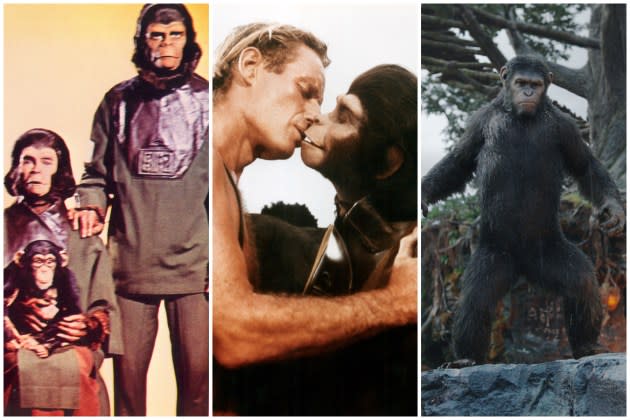
For a writer, signing on to “Planet of the Apes” is less an assignment than a calling. After all, it’s the longest-running science-fiction series in film history. So when Rick Jaffa and Amanda Silver, the husband-and-wife screenwriting and producing team, conceived “Rise of the Planet of the Apes” in 2011, they envisioned more than a single-serving reboot. “We did see that if we played it right, there’d be at least three movies,” Jaffa tells Variety.
He wasn’t wrong: Their four-film stint culminates with “Kingdom of the Planet of the Apes,” the franchise’s 10th installment (and the first in a reported new trilogy). Their tenure follows that of Paul Dehn, who took over screenwriting duties from Rod Serling and Pierre Boulle for the 1970s “Planet of the Apes” sequels. “Kingdom” also echoes the series’ labyrinthine internal timeline, which elapses across a millennia of circular (and occasionally contradictory) storytelling.
More from Variety
'Kingdom of the Planet of the Apes' Swings to Top Spot Debut at U.K., Ireland Box Office
China Box Office: 'Kingdom of the Planet of the Apes' Opens on Top of Weekend Chart
As producers on “Kingdom,” the duo ensured screenwriter Josh Friedman and director Wes Ball moved “Apes” history forward while retaining the saga’s core elements.
“It’s not just action and spectacle,” Silver says of the series, “but there’s a deeper dive into other facets of the storytelling.” Adds Jaffa: “By creating apes that are like us, it allows us to explore what it means to be human.”
Ahead of the May 8 release of “Kingdom,” brush up on where (and when) “Planet of the Apes” has gone.
Best of Variety
“Planet of the Apes” (1968)
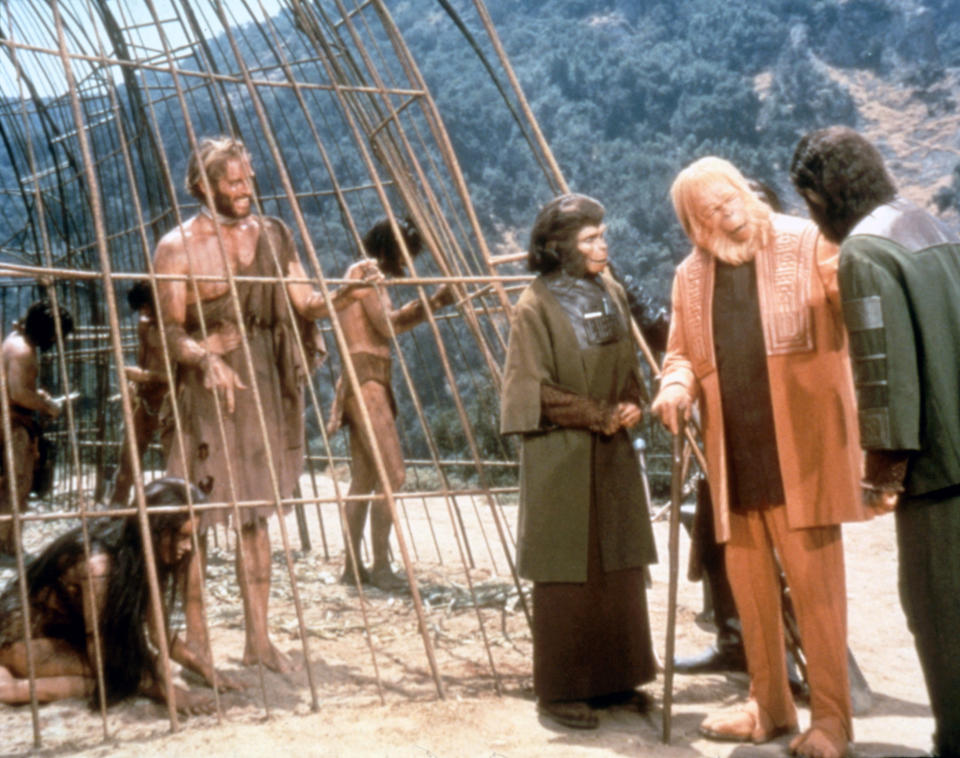
In the year 3978, cantankerous astronaut George Taylor (Charlton Heston) crashes on an unknown planet where “damn dirty” apes have evolved into the dominant species. Later he learns it’s actually post-apocalyptic Earth, destroyed by “maniac” humans.
“Beneath the Planet of the Apes” (1970)
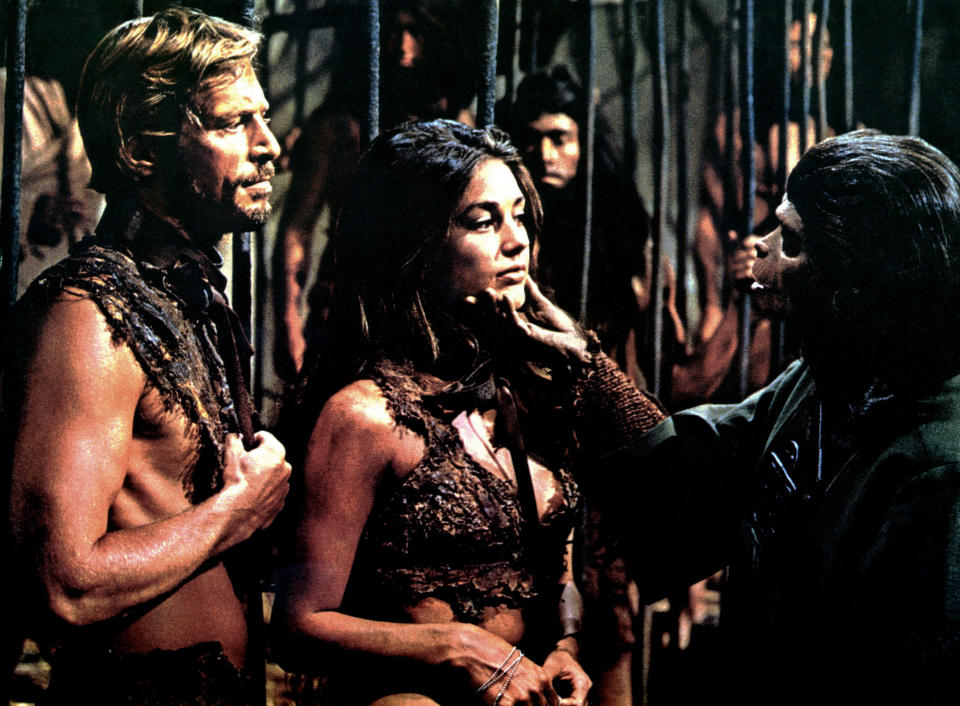
Though inexplicably set in 3955, director Ted Post’s sequel picks up immediately after its predecessor with the crash of a second spaceship carrying hunky astronaut Brent (James Franciscus). Brent and Heston’s Taylor become the aforementioned maniacs when they inadvertently detonate a doomsday weapon.
“Escape From the Planet of the Apes” (1971)
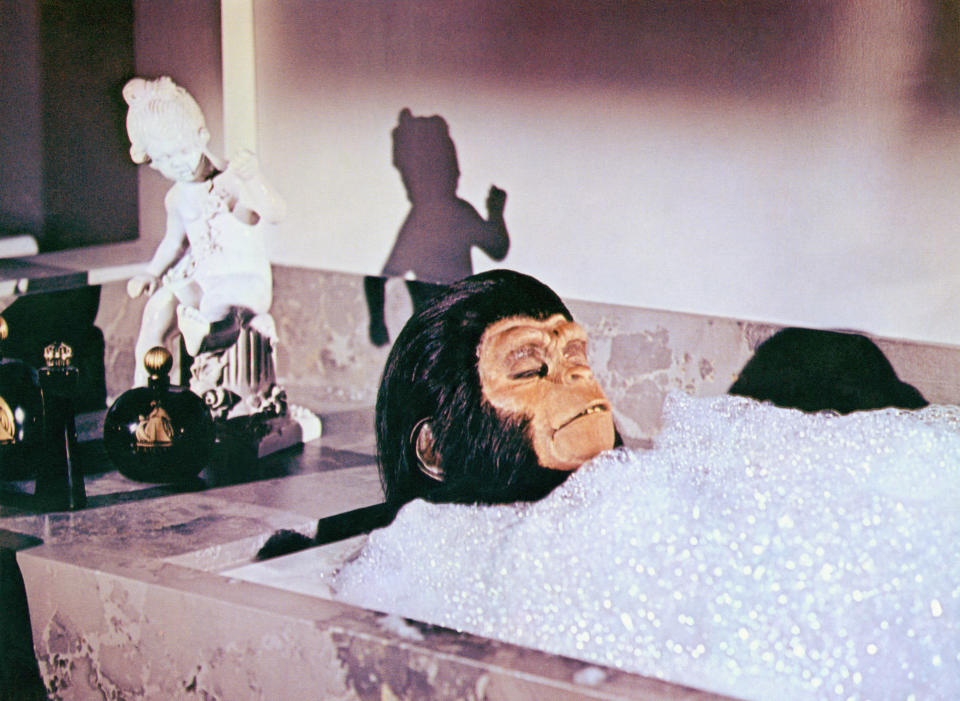
Chimpanzees Cornelius (Roddy McDowell) and Zira (Kim Hunter) flee Earth prior to its destruction and surf a time warp back to 1973. Their overnight-celebrity status, including a Hollywood glow-up and a suite at the Beverly Wilshire Hotel, quickly sours after authorities discover that they once experimented on humans, forcing them on the run just as Zira prepares to give birth to their son Milo.
“Conquest of the Planet of the Apes” (1972)
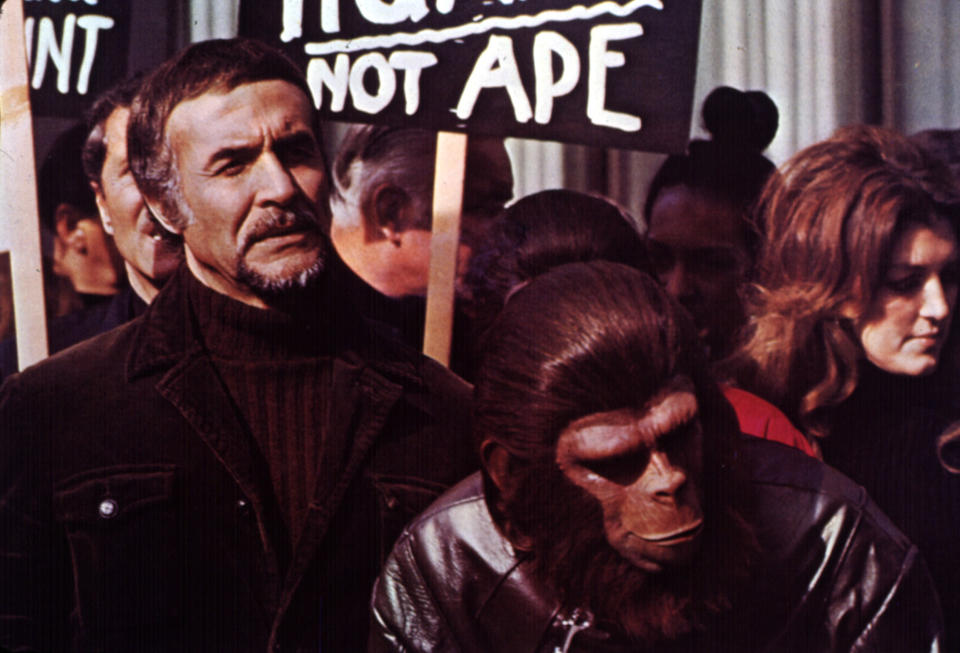
In 1991, Milo (McDowall, playing son to his own Cornelius!) — now grown and named Caesar — leads his fellow primates in an uprising against their human oppressors. The ultramodern architecture of Century City was used as a stand-in for the futuristic police state.
“Battle for the Planet of the Apes” (1973)
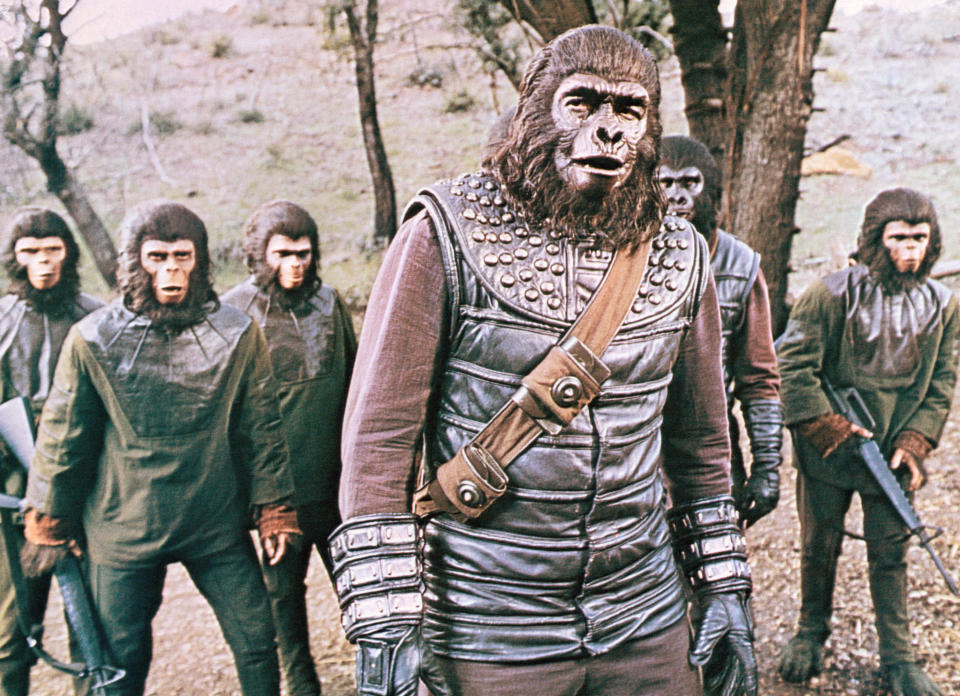
Set in 2003, gorilla general Aldo (Claude Akins) stages a coup to overthrow Caesar (McDowell), just as humanity’s dregs mount a final attack to regain control of the planet. The least successful of the “Apes” films, it killed the big screen franchise for almost three decades.
“Planet of the Apes” (2001)
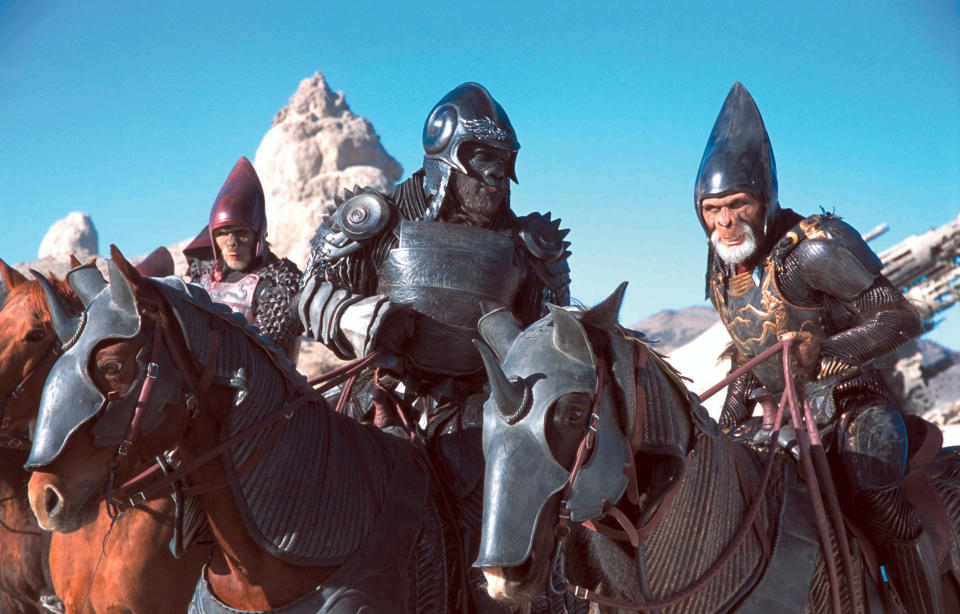
Tim Burton’s misbegotten reboot, set in 5021, enlists Mark Wahlberg, Tim Roth and Paul Giamatti —as well as shockingly realistic prosthetic make-up by seven-time Oscar winner Rick Baker — to zhuzh up the story of the original film.
“Rise of the Planet of the Apes” (2011)
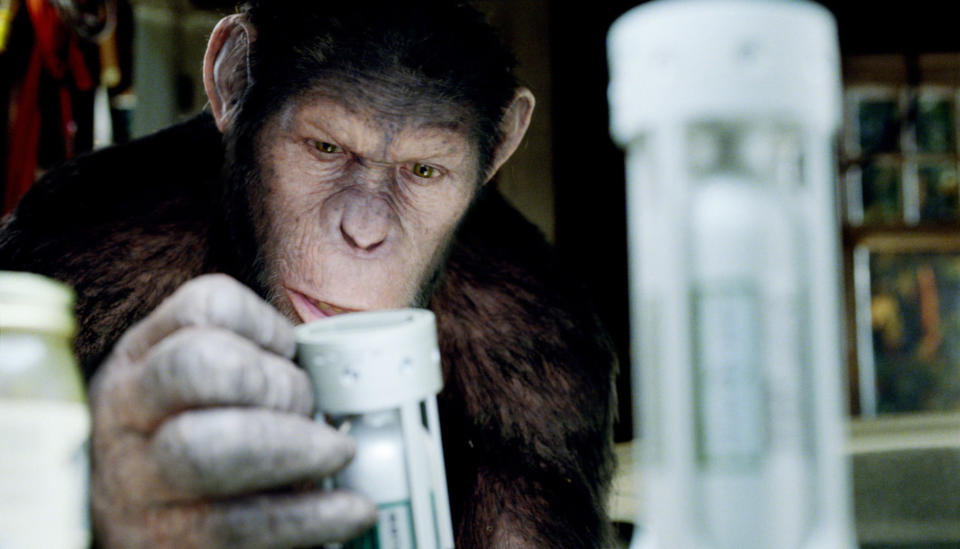
Told largely from the animals’ perspective, “Rise” takes place mostly in 2019. When rescued chimpanzee Caesar (Andy Serkis, in a role unrelated to the earlier Caesars) develops higher cognitive functions after being exposed to an experimental serum, he helps the primates escape to freedom as a pandemic decimates Earth’s human populations.
“Dawn of the Planet of the Apes” (2014)
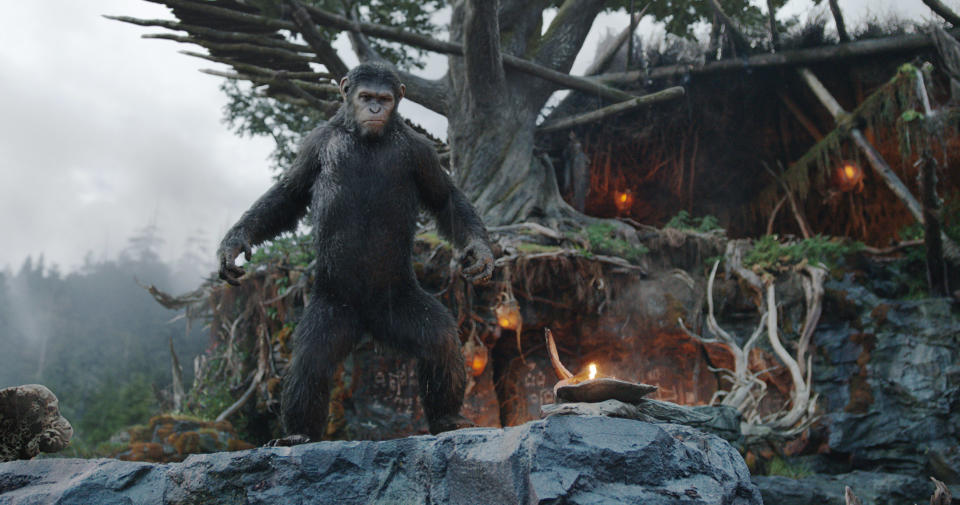
In 2029, Caesar’s even-handed leadership is challenged by a rebellious lieutenant named Koba (Toby Kebbell) who believes that the key to ape survival is striking first against the increasingly desperate human survivors.
“War for the Planet of the Apes” (2017)
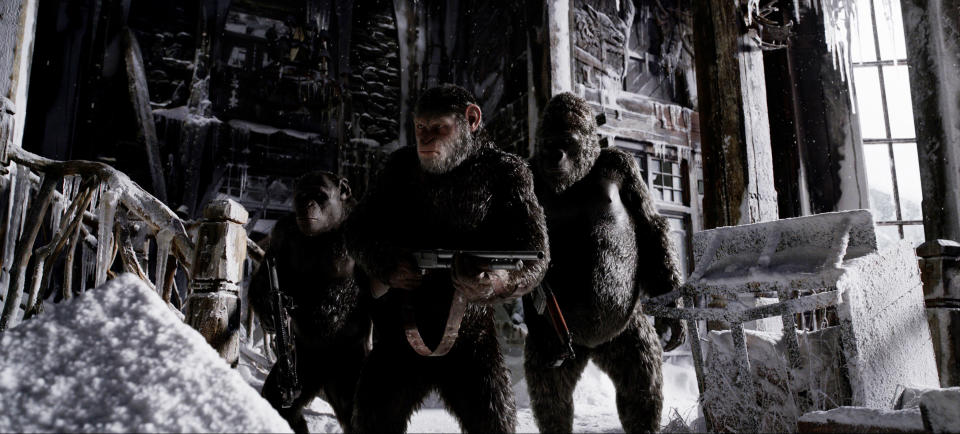
Two years later, Caesar’s colony of apes are detained in prison camp by a homicidal military colonel (Woody Harrelson) inspired by iconic Vietnam War films (a callback to the franchise’s politically-minded roots), who fears both his dissenting superiors and a mutant strain of Simian Flu that reduces humans to primitive animals.
“Kingdom of the Planet of the Apes” (2024)
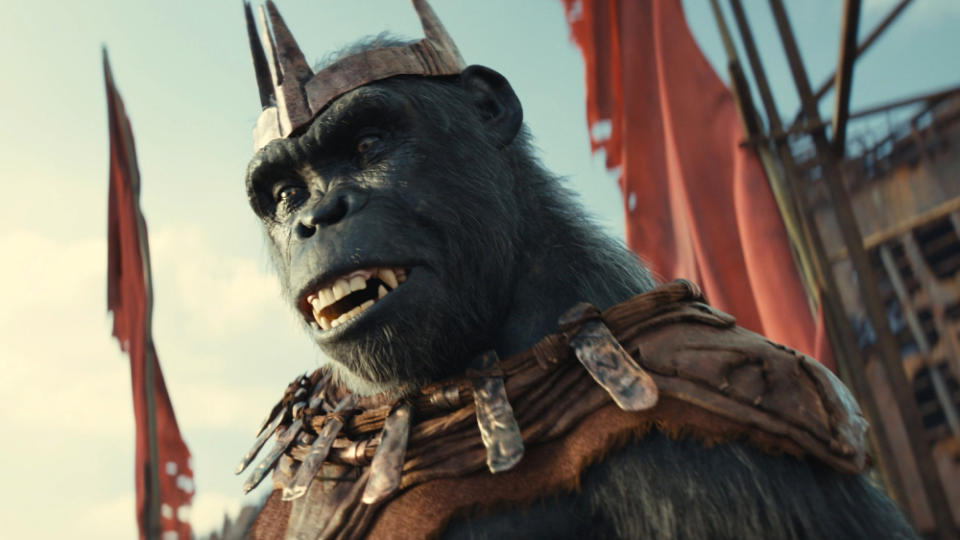
Three hundred years after Caesar’s death, another internal conflict erupts when a young champanzee named Noa (Owen Teague) questions the presumed superiority of apes over humankind.


